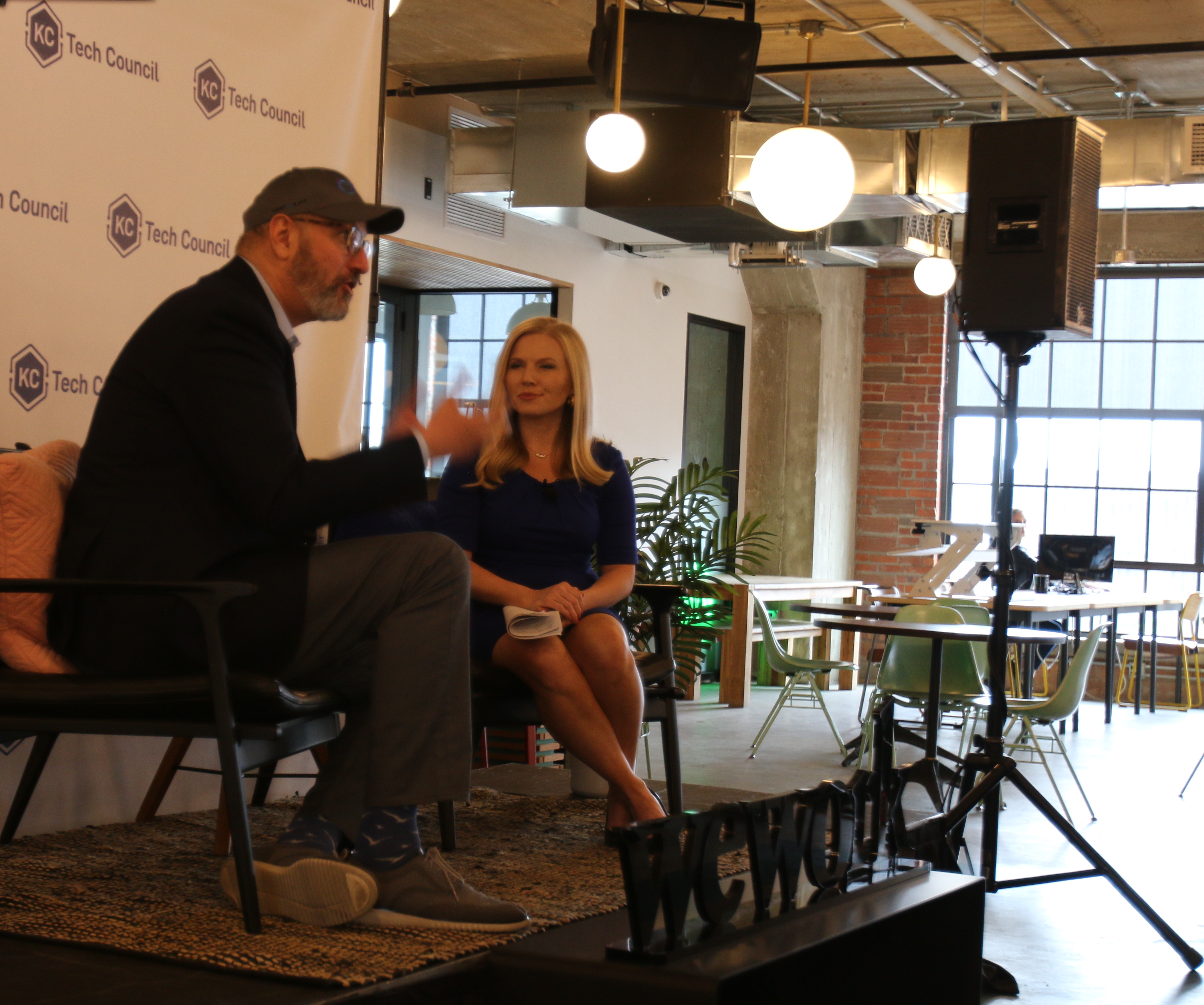HOME | ABOUT US | MEDIA KIT | CONTACT US | INQUIRE
HOME | ABOUT US | MEDIA KIT | CONTACT US | INQUIRE
If you want to get to St. Louis in 30 minutes, you’re going to have to wait a while.
Virgin Hyperloop One, the company proposing magnetic high-speed transit systems around the world at speeds of up to 760 miles per hour–including a route across Missouri that would reportedly take passengers from Kansas City to St. Louis in half an hour–had its chief executive officer, Jay Walder in town this week at the WeWork offices in the Crossroads to explain the proposal’s status. The KC Tech Council sponsored the presentation about the plan, on which Black & Veatch released a feasibility study in October.

Jay Walder, addressing some of the factors that could make Missouri the first site of an operating Virgin Hyperloop route.
Virgin has yet to perform a passenger test at its facilities in Nevada. Coupled with the immensity of constructing a tube along Interstate 70, at a price tag of about $10 billion, that doesn’t equate to a swift timetable. And on top of that multiple layers of government approval await.
But Walder says the first operational Hyperloop could start gliding by 2030, and Missouri has a leg up on other parts of the country for being home to the first one in the United States, due to interest state officials have shown in the endeavor.
“They’ve put Missouri at the front of the pack of places,” he said. “This can be a model of how we can take an interstate highway system and look at how it becomes fit for the purpose of 21st-century transportation.” Additionally, the I-70 corridor, as currently configured, can handle 70 percent of the Hyperloop route, which is well above and beyond the capabilities of other proposed routes, Walder said.